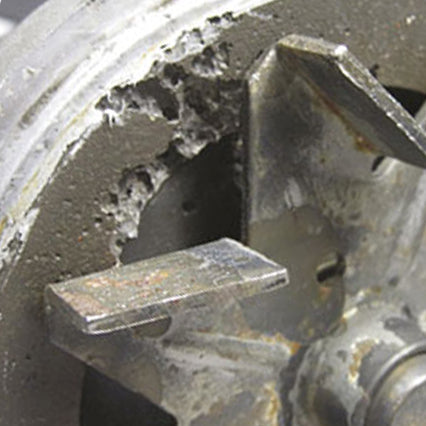What causes pump cavitation?

According to Bernouli's Law, when velocity goes up, pressure goes down. Spinning a centrifrugal pump in and engine imparts velocity to the liquid in the eye of the impeller. Under the right conditions, the liquid can boil or vaporize in the eye of the impeller. When this happens we say that the pump is suffering from vaporization cavitation
When the inlet pressure of a water pump falls below pump design specifications, tiny vapor bubbles can form in the water around the eye of the impeller. When the coolant containing these bubbles is forced into a high pressure environment on the other side of the impeller, these bubbles collapse, thereby creating tiny shock waves and points of high temperature. The sound of cavitation has been compared to the sound of "gravel" passing through the pump. These shock waves may corrode the surface of the impeller and housing chamber.
Flowkooler pump impellers are designed for smooth pathway of contained coolant flow with vane shrouding and porting. It can't entirely prevent it at the extreme rpm but it reduces the onset of cavitation for conventional driving.
Mid engine cars like Panteras with 351C often have sharp elbows, valves, other fittings and obstructions cause more frictional pressure loss in the pump suction, thus increasing possibility of low pump suction pressure leading to cavitation.


Comments on this post (0)